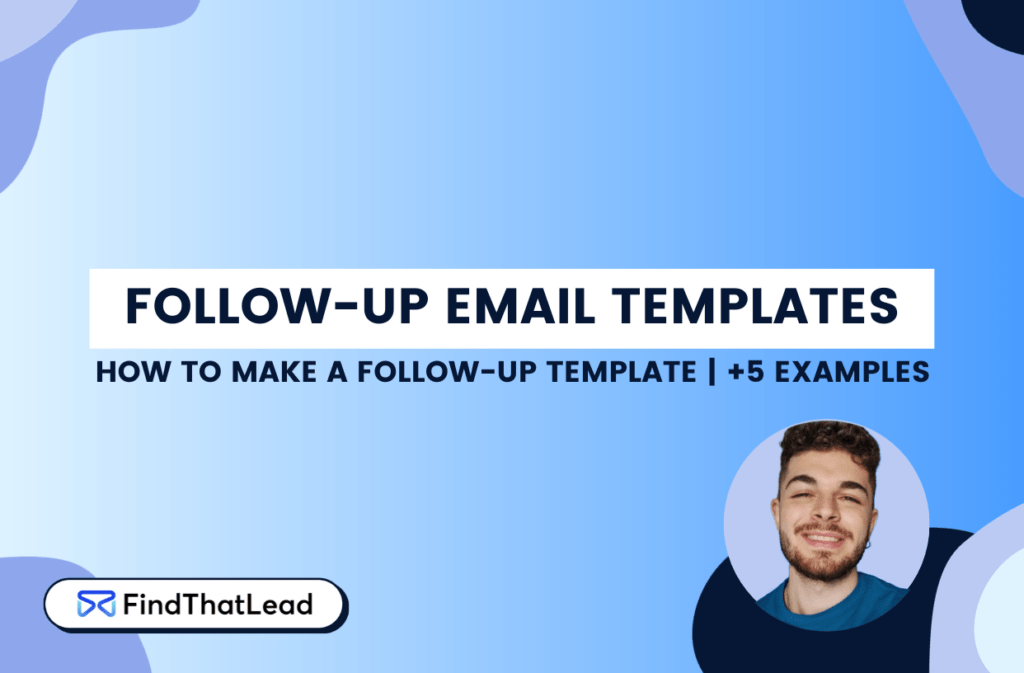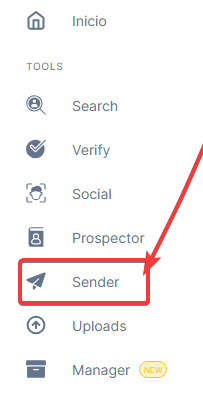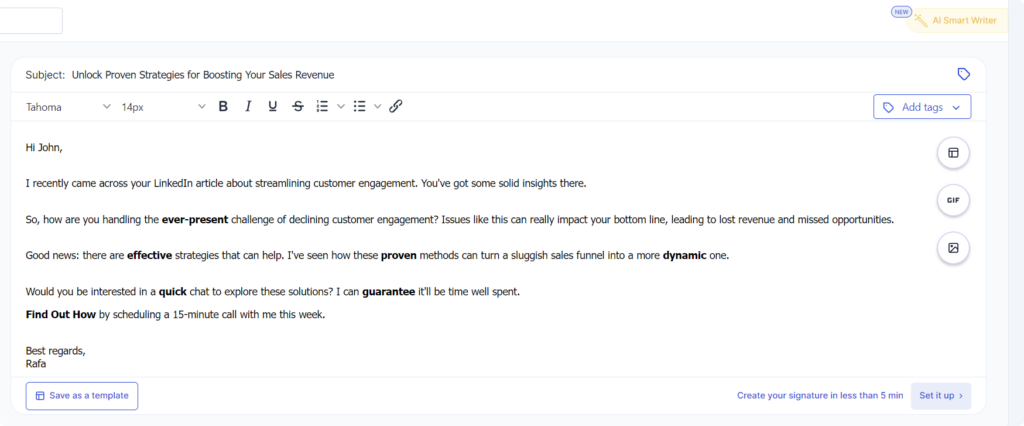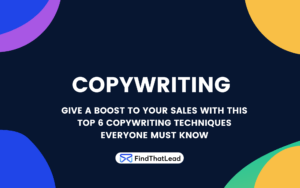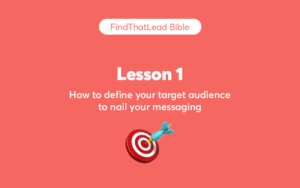You’re here for a reason: sending a follow-up email increases reply rates significantly. Let’s see:
Statistics reveal that the first follow-up can get you a reply rate 40% higher than the initial email. Despite this, 70% of cold emails never get a follow-up, even though follow-ups are proven to be effective.
Adding just one more email to your campaign could lead to 22% more conversions.
Most opened emails are read within a day of sending them, with a 91% chance of your email being opened within this window if it’s going to be read at all.
And if you’re feeling as lost as we ALL have been in the beginning, I’m here to bring you some basics and…. proven follow-up email templates.
Shall we get started?
Why a Good Follow Up Email Matters
If you send an email and don’t hear back it’s okay to send another. It’s basically reminding the person on the other end that you’re waiting for an answer. It’s simple: your message is important, and a follow-up shows that.
The Impact on Response Rates
People get lots of emails, and they might miss some. By sending a follow-up, you increase your chances of getting a response. It’s a straightforward way to make sure your email gets the attention it needs.
Avoiding the “Squeaky Wheel” Effect
Crafting the Perfect Follow Up Email Template
I recommend you to have a CUSTOMIZABLE Follow-up email template…
What do I mean by this? Have a structure that allows you to change a few or many things within the email itself.
But by all means, copy, paste the template and hit send… Please.
Let’s see how you can create your own template:
Being Specific and Personal
Your template should make it easy to insert specific details. This isn’t about a one-size-fits-all approach; it’s about making the recipient feel like you’re only talking to them.
Add their name, reference the last interaction, and clarify the purpose of your follow-up, making each email as individualized as possible.
Genuine Tone: Key to Engagement
The tone of your template should show your attitude, allowing you to adapt to formal or casual as needed. It’s a baseline that you can modify based on who you’re emailing and what you’re emailing about. The goal is to maintain authenticity in every interaction.
The Art of Including Original Messages
Make sure your template has a section to reference the previous exchange. This is not just for context; it’s to demonstrate that you’re engaged in this conversation and committed to what was previously discussed.
With these guidelines, your template will be both versatile and effective, ready to be customized and sent out quickly. Now, let’s focus on those specific words and phrases that will make your follow-up emails stand out.
Key Words and Phrases for Effective Follow Ups
The right words will indeed open doors. When you’re crafting that follow-up, each word should be carefully picked for impact and clarity. Aim for direct language that’s professional yet has a touch of warmth.
Phrases to Boost B2B Emails
B2B doesn’t have to be stiff and formal. Start with something like, “Hey [Name], just wanted to circle back on…” or “Hi [Name], checking in on our chat about…”
This approach is friendly and direct, showing that you value the ongoing conversation and are keen to keep things moving.
Engaging B2C Follow Ups
For B2C follow-ups, keep the vibe friendly and casual. Try “Hi there! Quick nudge about…” or “Hello [Name]! Have you had a chance to look at…?” It’s inviting and shows you’re there to help, not to pressure.
Templates and Samples: Your Toolkit
Providing a practical toolkit, we’ll go through various templates suited for different follow-up scenarios.
Follow Up Email Templates for Various Scenarios
Follow-up Email Template for Checking In After a Meeting:
Subject: Recap of [Meeting Date/Topic]
Hi [Name],
Following our meeting on [date/topic], I’m touching base to see if you have any further questions or thoughts.
Looking forward to your feedback.
Best, [Your Name]
Post-Interview Follow-up Template:
Subject: Thank You for the Opportunity
Hi [Interviewer’s Name],
Thank you for the conversation on [date]. I’m eager to hear any updates you may have regarding the [position] role.
Appreciate your time and consideration.
Warm regards, [Your Name]
Sales Follow-Up Email Template:
Subject: Still Interested in [Product/Service]?
Hi [Name],
I hope this message finds you well. I wanted to follow up on our previous discussion about [product/service] to see if you need any more information to assist with your decision.
Let me know if there’s a good time to discuss.
Best, [Your Name]
Second Follow-Up Email Template for Sales:
Subject: Quick Check-In on [Product/Service]
Hi [Name],
Just wanted to quickly check in about [product/service] we talked about. If you’re still weighing options, I’m here for any questions you have or further info you might need.
Cheers, [Your Name]
Follow-Up Email Template for Unanswered Sales Inquiry:
Subject: [Product/Service] Next Steps?
Hey [Name],
I noticed we haven’t wrapped up our chat about [product/service]. No pressure, just wanted to see where you’re at with your decision. Happy to provide more details or answer any questions.
All the best, [Your Name]
Real-Life Follow Up Email Examples
Final Thoughts: Maximizing Impact with Follow-Up Email Templates
To wrap up, remember that the success of your email strategy hinges on persistence and relevance. The stats speak for themselves: following up can significantly boost your open and response rates.
A well-timed, well-crafted follow-up email template can be the difference between missed connections and fruitful relationships. Keep your messages personable, to the point, and remember to include a clear call to action.
And don’t forget, these aren’t just numbers. A robust follow-up strategy is a testament to your commitment to your contacts and your craft. It shows you’re not just ticking a box; you’re invested in the communication.
So, take these final thoughts, use the templates and examples provided, and start turning those follow-ups into opportunities. With the right approach, each email you send is a step towards achieving your goals.

